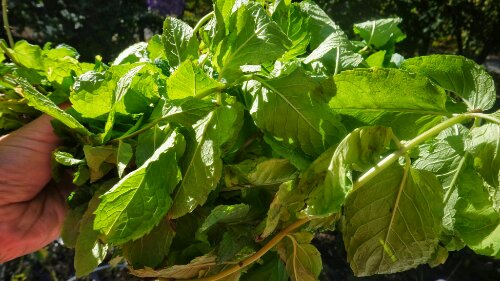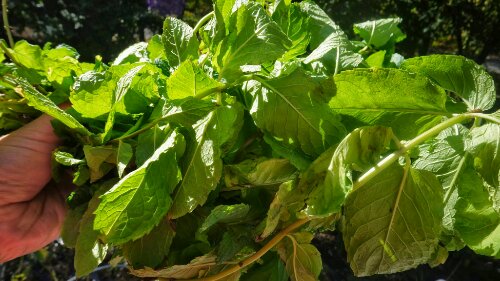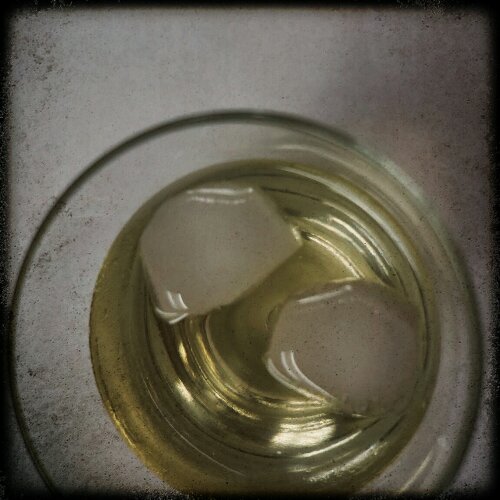
Garden Tuesday : Herbs & Cocktails
Crisp, dewy mornings. Mid-day temperatures in the mid-60s. Cool evenings. Nights requiring a blanket. Trees brazenly flaunting their reds, oranges and yellows. An abundance of crunchy, local apples and a mind boggling array of squash varieties. Aromas and flavors turning to cinnamon, nutmeg, sage and spice.
Fall is upon us. I love fall.
The garden production is tapering off. Tomatoes and peppers are ripening their last fruits. It’s probably a futile exercise since either I, for canning, or the oncoming frost will likely cut this last production short. There are still collards and kale that will provide us fresh greens well into the winter and happily sweeten from frost. The brassicas of broccoli, brussel sprouts and cauliflower are also content with the turn of weather. After struggling in summer heat, they seem to celebrate the fall by producing tight, sweet heads.
The not-so-fun-yet-oh-so-fun part of this season is putting the garden to bed for the winter. Beans stalks, hop vines, sunflowers, summer squash and tomato and pepper plants all need to be pulled and turned into compost and mulch. Summer sweetened carrots are ready to eat or store. The potatoes, which are finishing curing in their dirt filled bags, are ready to come up. Next year’s garlic and perennial bulbs need to go into the ground to allow them to root through the winter. Finally, the last herbs that will not be over-wintered need to be trimmed and harvested.
But what does one do with handfuls of mint, sage and lemon balm. After filling numerous jars with dried tarragon, thymes, sage and oregano, and making a gallon of frozen basil and pine nut pesto, I started running out of ideas for preserving herbs.
In the past, I would take these plants indoors in an attempt to extend their season. This was marginally successful. The few extra weeks I got before the plants took it upon themselves to either scale back and hibernate or just kick the bucket weren’t enough to exhaust the supply. Typically the result is a living room littered with leaves and needles that I ignore sweeping up for as long as possible.
So, in an attempt to get ahead if the impending die off, I opted for herbal infused syrups. Steeping a few handfuls of herbs in a hot just boiled liquid of equal volumes of sugar and water, resulted in incredibly flavorful syrup. I made concoctions of spearmint, peppermint, sage and lemon balm. All-in-all the end result was about a gallon of various infusions.
Now, the question is, what does one do with a gallon of herbal infused syrups? Cocktails, that’s what.
I am just beginning to experiment with cocktail ideas. To keep true to the flavors of syrup infusions, I went simple out of the gates with blends of syrup, gin and soda. Although the lemon balm infusion gave a slight aroma of lemon floor cleaner, the lemon balm, mint, gin and soda was a winner. The advantage is that unlike something like a mojito with muddled mint, these infusions give a lot of herbal punch without all the leaves in the drink. They make beautifully clear cocktails!
Now, I have yet another reason to love fall. . . garden cocktails!
The Floor Cleaner
8 ounce Collins glass
1/2 ounce 1:1 mint syrup (recipe below)
1/2 ounce 1:1 lemon balm syrup (recipe below)
1-1/2 ounce gin ( I used Tanqueray, but Plymouth is a good alternative)
Lemon zest
3 ice cubes
Soda water
Pour syrups and gin together and give it a stir. Add ice cube and top with soda water. Gently stir. Rim glass with lemon peel and twist into drink.
Herbal Infused 1:1 Syrup
1 cup white sugar (organic cane can be used, but it lends additional flavor)
1 cup water
Handful of fresh herbs such as mint, lemon balm, lemon verbena, sage. . .
In an appropriately sized sauce pan, stir together sugar and water. For this size recipe, a 1 quart works well. Bring mixture to a boil, stirring constantly to prevent the sugar from burning. Once boiling, take off heat and add the herbs and fully submerge in the liquid. Cover and let sit at least 20 minutes. Sample frequently until infusion is to desired strength. Strain into a jar.
This recipe can be scaled directly.


Leave a Reply